Nudity, blood and meat hooks: are Florentina Holzinger’s shows the most controversial work seen in Australia?
Audiences faint, walk out and also applaud during Florentina Holzinger’s performances, which feature blood, sexual acts and a rat being taxidermied, delivering an experience they are unlikely to forget | WARNING: GRAPHIC IMAGES
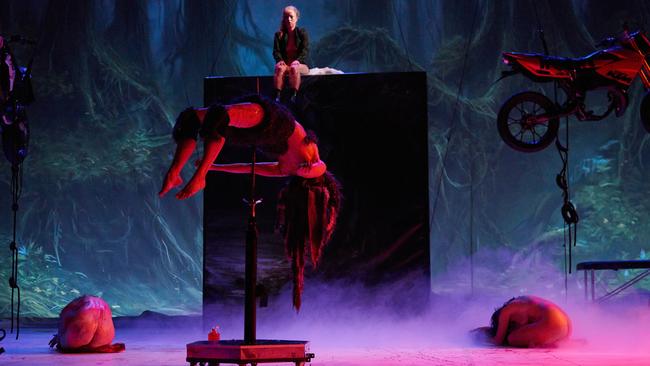
It is the warnings accompanying Austrian choreographer and performer Florentina Holzinger’s upcoming dance-theatre productions that first capture your attention. “Show contains explicit scenes of violence, self-mutilation and nudity, live taxidermy and performers smoking cigarettes on stage”, notes the website for Dark Mofo in Hobart, where Holzinger’s A Divine Comedy will have its Australian premiere. Melbourne’s Rising Festival, presenting Holzinger’s 2019 work Tanz includes as part of the show’s description: “Tanz has stirred walkouts and fainting, along with accolades and rapturous applause. It’s part gross-out comedy, part shock-horror show, part ghost story, part superhuman dance work.”
Indeed between the two shows, in which the all-female casts are completely nude, audiences are treated to plenty of blood (real and fake), a woman masturbating and ejaculating on stage, another appearing to give birth to a rat (filmed live up close and personal), others doing aerial ballet on suspended Harley Davidsons and yet another becoming airborne suspended by meat hooks pierced through her shoulders.
But once you get beyond the shock and the gore, it’s clear there are thought-provoking ideas underpinning Holzinger’s work; a lot of research, lived experience and interrogation of art history and classical ballet underline the spectacle. She questions the punishing physical demands, obsession with beauty and outdated gender stereotypes often seen in classical ballet, while examining the human dimensions of life and death.
The works’ cultural influences range from Dante to Shakespeare to subversive artists such as Mike Kelley. There is also a good dose of dark humour and plenty of awe-inspiring stunts in both shows, which address serious topics but refuse to take themselves or their subject matter too seriously. Yet their thorny concepts demand attention, lingering in your mind long after the curtain comes down … if you last that long.
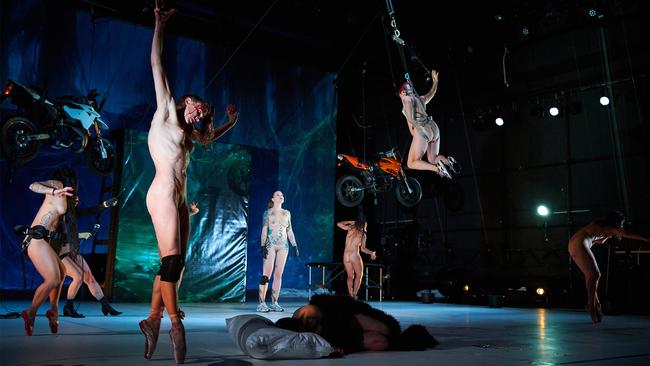
It is early morning in Sydney when Review zooms in to meet Holzinger, the architect of these confronting, provocative works and the current toast of contemporary European dance. It is close to midnight in Vienna where Holzinger is based, but despite the late hour she is fresh-faced, generous with her time and thoughtful with her answers in a conversation that continues by email long after our interview ends.
Born to a pharmacist and lawyer, Holzinger, 36, grew up in Vienna. She turned to dance aged 17, after struggling with identity issues and eating disorders.
“There was definitely a struggle with becoming a woman, as it was supposed to be,” she says. Her strong, athletic physique and late arrival into the dance world ruled her out of classical ballet so she turned instead to the Amsterdam-based experimental School for New Dance Development that encouraged students to explore the possibilities of their bodies beyond traditional dance.
“That was for me something I’d never experienced before as a means to express oneself and to come to terms with living in one’s body,” Holzinger says. “Controlling the body as a dancer controls her body can have all different forms and the inside of the body is not excluded from that.” It sowed the seed for ideas about the body as a spectacle she would later explore in works such as Tanz and A Divine Comedy.
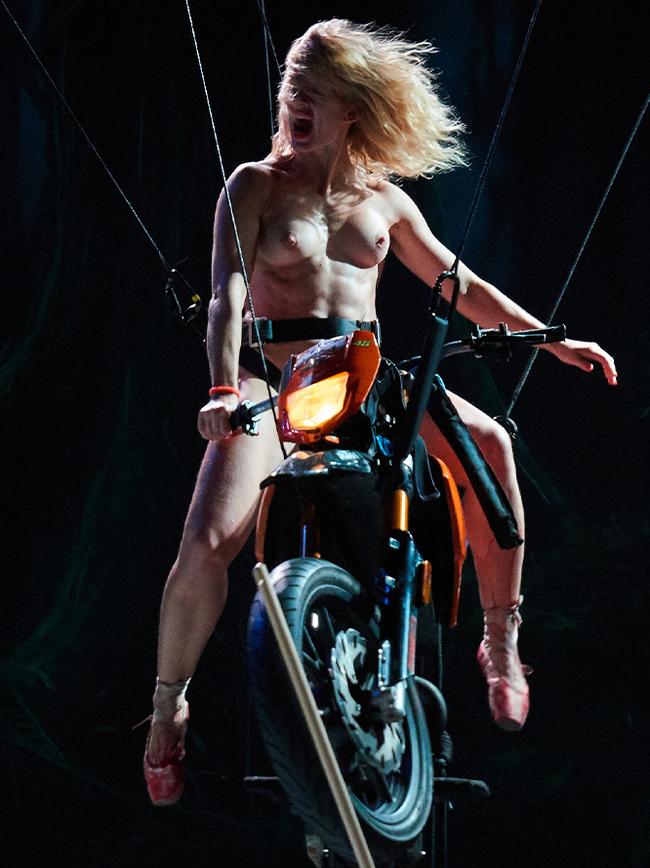
Holzinger undertook a number of dance scholarships throughout Europe and quickly began devising her own award-winning shows. A collaboration with Dutch choreographer Vincent Riebeek explored the concepts behind classical ballet through the works of seminal choreographers. Their 2015 production Scheherazade was a contemporary interpretation of the groundbreaking Russian dancer-choreographer Vaslav Nijinsky’s (1910) work and addressed themes of gender, insanity and eroticism. Apollon was inspired by George Balanchine’s Apollon Musagete and, despite her being drawn to his strong, athletic choreography, led her to begin wrestling with some of the outdated stereotypes and demands of classical ballet, questioning the “overdone femininity of ballerinas”. Involving dancers bleeding and supposedly defecating on stage, the work was well received and toured internationally. Numerous other works followed, going on to join the European festival circuit.
In 2019, she was invited to be part of the creative team at the influential Volksbuhne theatre in Berlin, where she was commissioned to create a trio of works, beginning with Ophelia’s Got Talent, a riff on Shakespeare’s tragic heroine. Tanz is the third. Presented in two acts, it examines the tropes of romantic ballets, from flying fairies to wicked witches, in Holzinger’s hands manifesting as dancers being instructed to strip naked, donning bloodied pointe shoes to practise “being light”, resulting in one dancer being suspended, sylph-like, by a hook in her bun. In act two the witches tear around on their “urban broomsticks” – aerial Harley Davidsons.
Holzinger’s 2021 work A Divine Comedy is described by outgoing Dark Mofo creative director Leigh Carmichael as “the most incredibly wild theatre performance we have presented; its scale is unprecedented and bold”. Loosely inspired by Italian author Dante Alighieri’s epic 14th century narrative poem The Divine Comedy, exploring Hell, Purgatory and Paradise, Holzinger introduces myriad other cultural touch points including the Danse Macabre and Rodin’s Gates of Hell to question how humans negotiate and interpret life and death. Set in an autopsy room, audiences are exposed to everything from a dead rat being taxidermied on stage to the controversial live onstage masturbation and ejaculation – to Holzinger’s mind the ultimate example of body control.
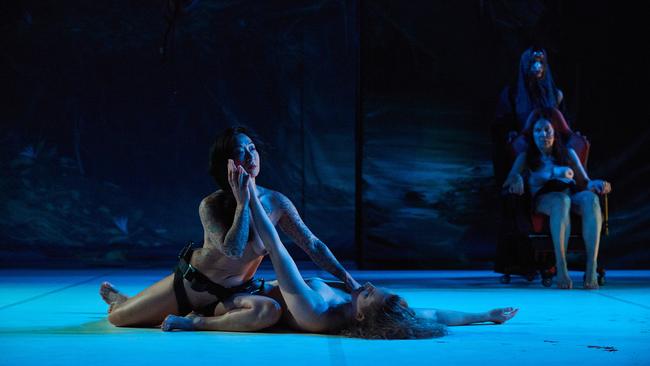
International praise for Holzinger and her work is loud and widespread. Volksbuhne theatre’s artistic director Rene Pollesch told The New York Times he was drawn to Holzinger’s determination to show various strong female performers (her cast includes older women and women with disabilities) doing daring demanding acts on stage. “This is radical feminism, not a reform feminism.” Artistic director of the German arts festival Ruhrtriennale that commissioned A Divine Comedy, Barbara Frey, credits Holzinger with creating a “new form” of performance that combines “dance, exuberant wit and great tenderness” while exploring “the male gaze and the female gaze on the female body”.
Dark Mofo’s Carmichael describes her as “a super talented artist who is brazenly contemporary and culturally relevant.” A Divine Comedy was the first show announced in the festival’s line-up.
For her part, Holzinger is simply asking audiences to shift their perspective or reconsider attitudes towards stereotypes we still blindly accept on stage, starting with classical ballet and its ongoing narrative of ethereal beauty translated through seemingly effortless performances by our professional dancers, many of them beautiful, wraith-thin ballerinas. The pointe shoe, of course, gives ballerinas the illusion of defying gravity, or flying, when in reality their feet are often left bloodied and disfigured with painful bunions and blisters.
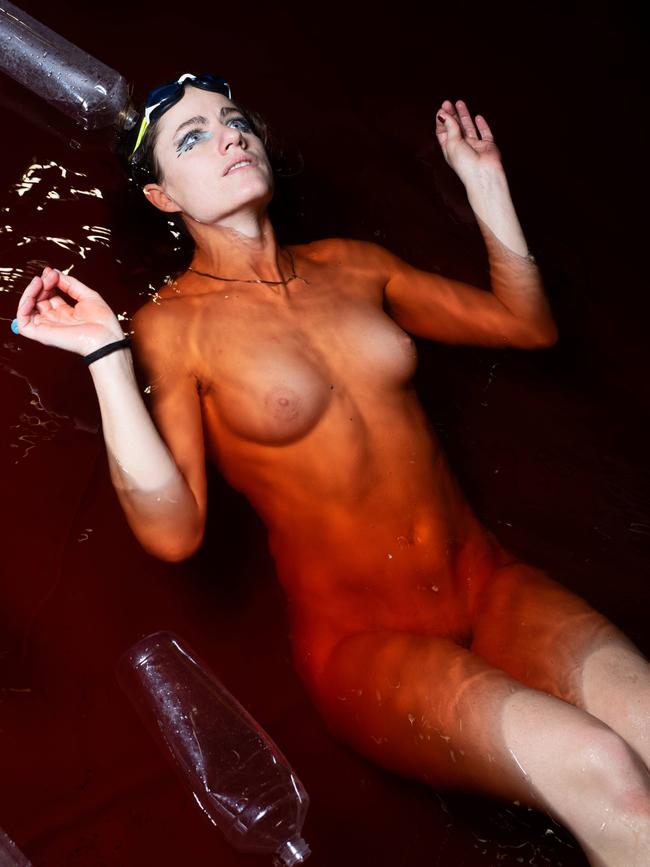
“Ballet is usually full of the illusion that everything is light and easy and weightless and effortless,” Holzinger says. “I totally like that quality but I also want to show the mechanics behind all the training and what is necessary to create that illusion. Anyone who’s seen the Black Swan knows it’s not effortless to be on pointe shoes so long, that this is a bloody affair. It is important to lift this veil from the ballet fantasy.” Hence the copious amounts of blood, both real and fake, that regularly features in her productions.
Melbourne audiences have a chance to consider first-hand what Holzinger is saying.
Rising co-artistic director Gideon Obarzanek says it is no coincidence he has programmed Tanz alongside the Australian Ballet’s Identity, a double bill of new classical works celebrating the company’s 60th anniversary, both in the physical program but also, as it happens, geographically in Melbourne’s Arts Centre. The building is adjacent to the Australian Ballet’s national headquarters.
“Florentina’s Tanz and the Australian Ballet’s Identity may seem radically different, but they are intimately connected through the origins of classical ballet – a type of virtuosic performance dance that demands years of precise training and represented by a European romantic archetype, the ‘ballerina’,” Obarzanek says.
“The Australian Ballet is focusing on ballet technique to tell new stories … while Tanz begins at the ballet barre it quickly departs, but discipline and virtuosic spectacle remain ever present.”
The AB’s artistic director David Hallberg was approached for comment but had not responded by the time Review went to press.
Ballet’s obsession with weightlessness and flying has long intrigued Holzinger. “The story of the pointe shoe and what it’s supposed to do is defy gravity or create this illusion of the body in flight. I was interested in taking off the floor and flying somehow, becoming these fairies.”
Holzinger sought out performers who had expertise in flying, from circus to sideshow performers and others from the so-called piercing scene (such as Tanz’s performer Lucifire, who is strung up through the shoulders), all of them top of their game. Her cast invites audiences to consider gender stereotyping and an ongoing need for more diversity on stages today. The cast ranges in age from 20 to 82-year-old Beatrice “Trixie” Cordua, the first ballerina to dance La Sacre de printemps naked in John Neumeier’s La Sacre in 1972 and a former dancer with Hamburg Ballet. Cordua, who has Parkinson’s disease and occasionally moves with a motorised wheelchair, is a commanding presence on stage.
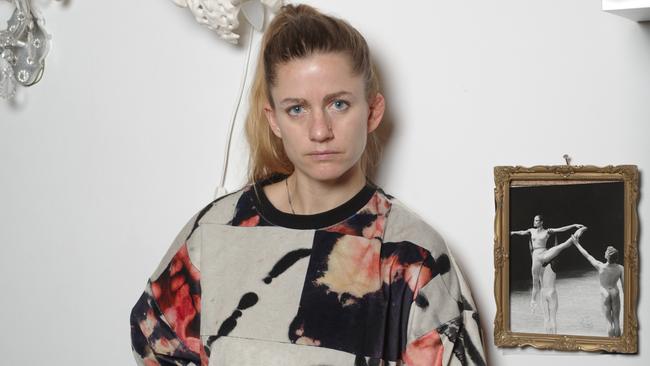
Gender stereotyping and the beauty myth is often reinforced in classical ballet today in the performing of the traditional, three-act ballets in which the ballerina is the beautiful, tragic heroine who needs saving by her handsome prince. “The topic of female representation on stage is a never-ending topic for me,” Holzinger says. “(With Tanz) I wanted to pinpoint things I was busy doing in previous shows, to dig deeper into this idea of beauty that is so inherent in the ballet tradition and something we still have to deal with a lot on stage nowadays. It’s not that I want to just do disgusting, ugly things. No, I want to shift the perspective of people about what can be experienced as beautiful and we go quite far in challenging these notions.”
This notion of beauty is also one of the reasons her casts will always perform naked, a pointed nod to art history that is “full of naked bodies, predominantly women” but acknowledging we are a society preoccupied with consuming the slim naked body “either via screen in porn or in the private sphere”. Through her naked dancers Holzinger aims to show the body “live at work”, but also hopes audiences become accustomed to what they’re seeing on stage, undermining the “erotic mechanism” so they can simply focus on the show.
As for the reactions that cause Holzinger’s shows to regularly attract headlines – fainting, walkouts, nausea – they are increasingly less frequent, particularly now she is resident at the Volksbuhne and becoming more understood.
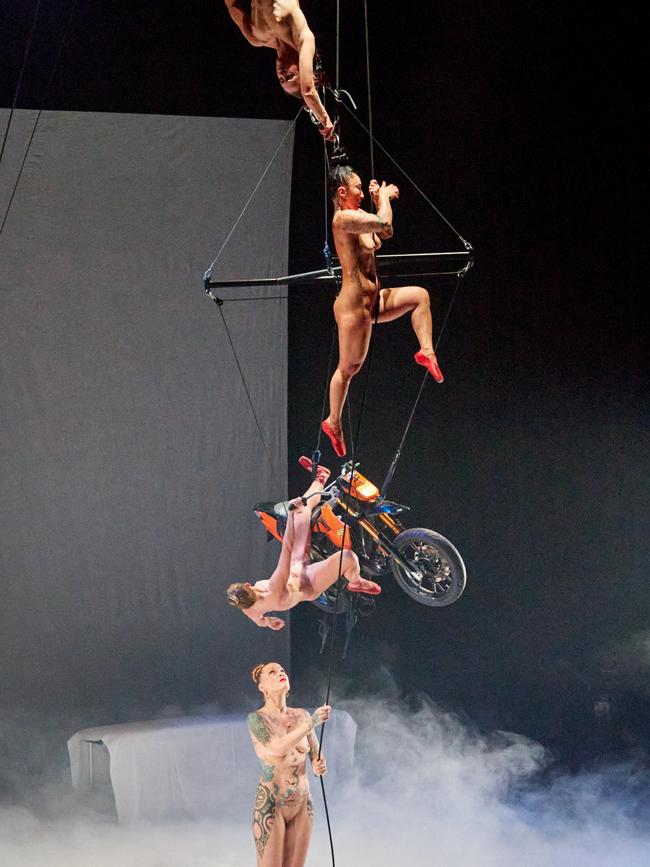
“Becoming known for certain types of work and getting credit for it, people are starting to take it more seriously, so they’re not so fast running out,” she says. At the same time she acknowledges an audience’s right to leave. “I do take very seriously the honour of giving people something for their money but I don’t need to entertain everybody. Part of the contract is you can get up and leave.”
What does irk her is the tabloids with their aforementioned easy headlines. “We get described in the tabloids like we’re crazy punks who are just shitting and puking on stage but are proud of it. Tanz is a show where we display such an amount of care and trust among each other and towards our own bodies and the bodies of others that it’s crazy to think we’re bad-ass punks,” she says, before adding, “I guess we are too, somewhere, but that’s not the source.”
Holzinger welcomes feedback and discussion but invites people to actually see the show before slinging arrows. “As soon as there’s a forum where people can offer their opinion they will, and mostly it’s not from people who come to the theatre so I’ll say, ‘Go and watch it for yourself, then let’s have a conversation. Because I think it’s quite approachable, what we do.”
As a choreographer whose work is in hot demand globally she doesn’t have too much time for the naysayers. “I don’t want to sound arrogant but the kind of shows we do you do get people writing me afterwards thanking me, saying, ‘I never, ever saw anything like this in my life’. I think that’s pretty valuable, to make people experience something they have not experienced before.”
Tanz is being performed as part of Rising Festival at the Arts Centre Melbourne June 8-10; A Divine Comedy is being performed as part of Dark Mofo at MyState Bank Arena Hobart June 16-18





To join the conversation, please log in. Don't have an account? Register
Join the conversation, you are commenting as Logout